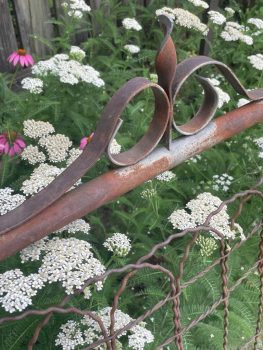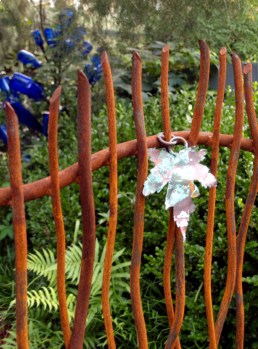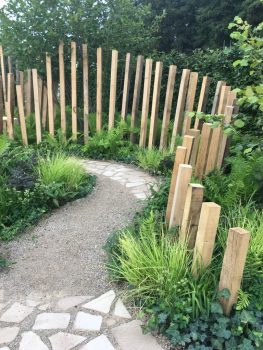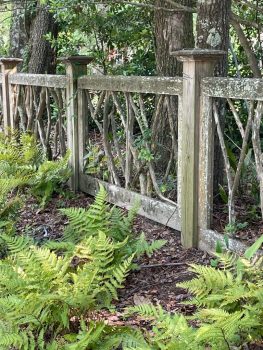Fences: Balancing Privacy, Style, and Neighborly Etiquette
Published 1:54 pm Wednesday, October 16, 2024
Lots of ways to get gardeners riled up, mostly over stuff that we all agree to disagree on, including which way is a fence supposed to face. Or if you should have a fence at all.
Sure, we often need the privacy and security of a fence, especially around urban back yards. But now front yard enclosures, which fell out of favor over the past century or so, are making a stylistic comeback for good reasons. When made with decorative materials or muted with plants, a fence can actually appear pleasant to outsiders while keeping them at a distance. As Robert Frost put it in his 1914 poem Mending the Wall, “Good fences make good neighbors.”
By the way, a landscape is not technically a yard, which is slang for garden, which cannot exist without a fence or hedge. We say we “go into” a garden because the root word comes from gher, which meant “to enclose.” Fence comes from fens, the root word of defense. Both were created out of necessity, to keep unwanted creatures out so what’s inside could flourish.
Up until my grandparents’ generation most gardens were enclosed, partly to wall out the riffraff, mostly to keep free-roaming livestock out of the hollyhocks. There are still practical uses, including hurdles for keeping dogs out of flower beds, or what is required around swimming pools. But, more than mere physical barriers, they are also social signals that control behavior just by being there (though it’s said that a fence will keep out only honest people).
Homeowner association edicts usually prescribe a veneer of conformity with rules on heights, material, set-back, and even which side to present to neighbors. Fence food for thought: Which way to face a wall-type fence can create cognitive dissonance, in which no matter what you do it is wrong. It’s your call, of course, but on one hand, it seems that the one who paid for it should be able to enjoy the “nice” side; on the other hand, social norms, and in many cases city and neighborhood landscape regulations, say the smooth or finished side is supposed to face outward towards neighbors, which signals friendliness and fundamental equality. And it also makes it harder for burglars to climb from outside.
While solid walls of wooden planks are popular and easy, in public view we are now going more with old-fashioned ornate pickets with a wide assortment of cuts at the tops of each slat, from squared to pointed, rounded, or heart-shaped. Iron, cast-iron, or woven-wire fences are also coming back onto popularity; while post WWII chain link is now almost universally shunned in suburbia, the popular Victorian curly-wire “hair pin” fences and gates of my grandmother’s era are being produced again.
We may love our neighbors, but we need our personal space, at least psychologically. Beyond the cliché about living a staid life behind a white picket fence (pontificated mostly by those who don’t live behind one), fences and hedges literally create a gap between people; however, while transcending selfishness and fear, they can soothe those who erect them, providing a respite from a complex and troubling world.
My front and back garden enclosures are fun, made with creative materials, yet literally and psychologically separate me from the world. Nothing makes me feel so secure as when I come home and pass through an entry arbor or gate, which, though rarely locked, is a threshold that says, “I’m home, and safe.”
But I was careful, when redoing my front garden’s fence, to make sure I didn’t breach the peace by breaking which-way-to-face laws.
Felder Rushing is a Mississippi author, columnist, and host of the “Gestalt Gardener” on MPB Think Radio. Email gardening questions to rushingfelder@yahoo.com.










